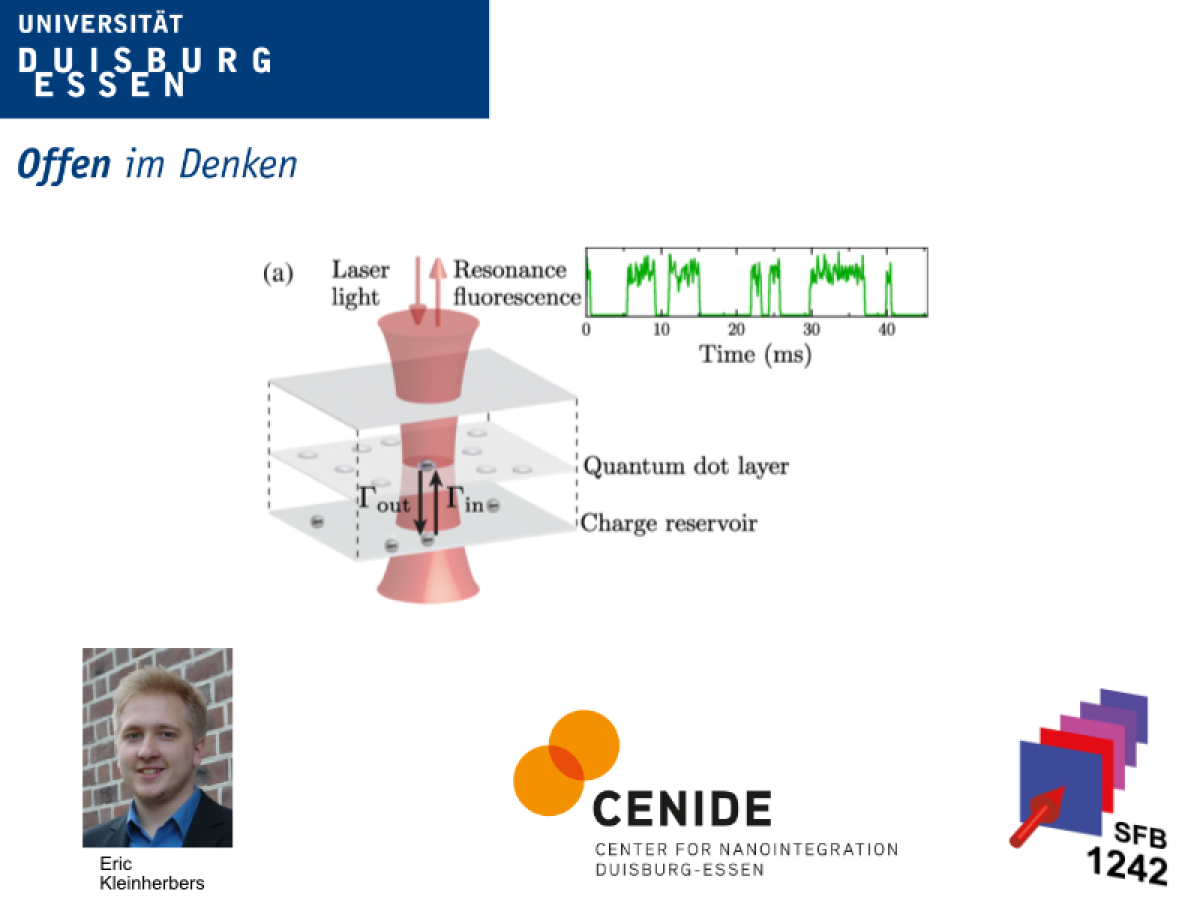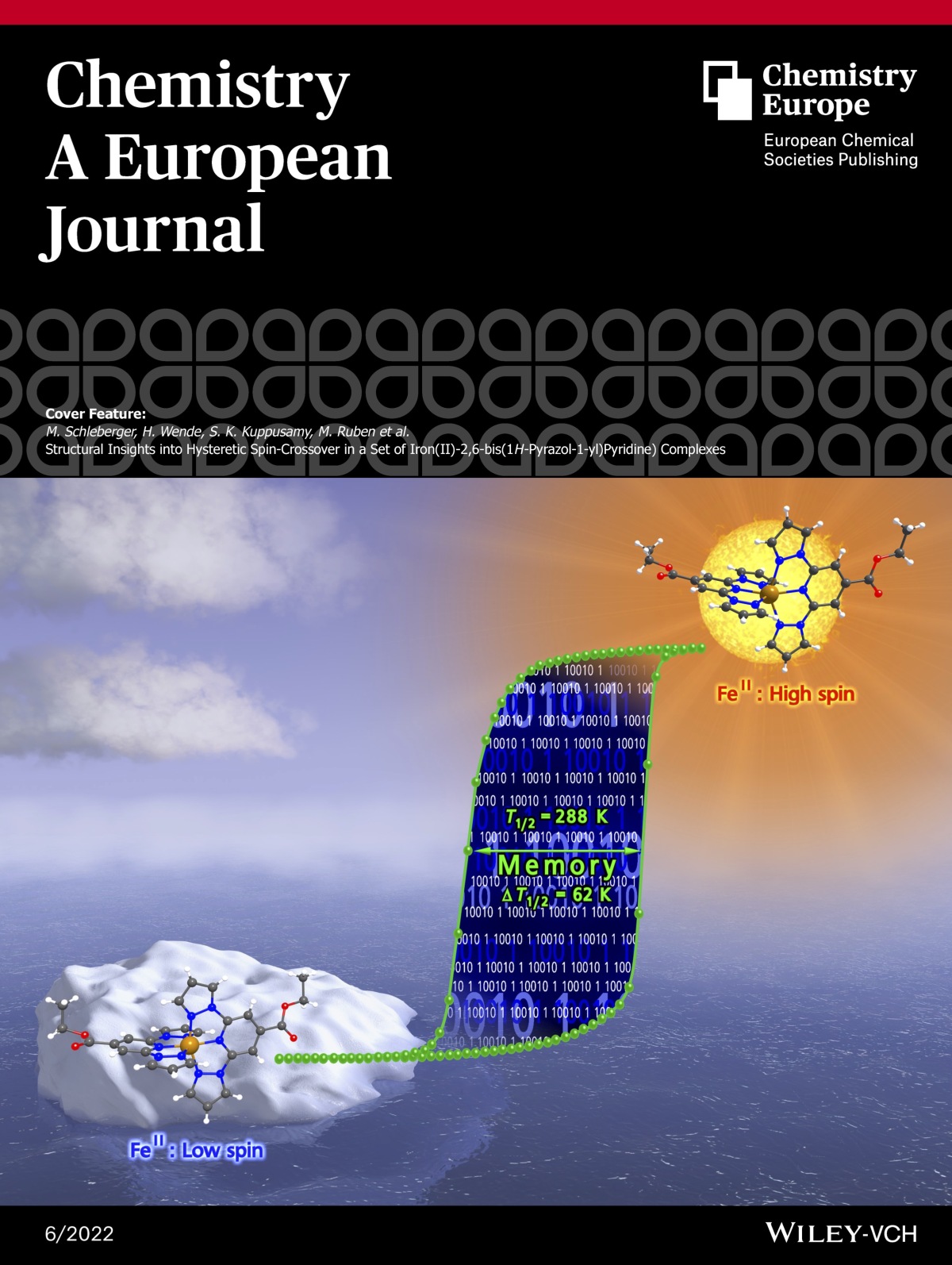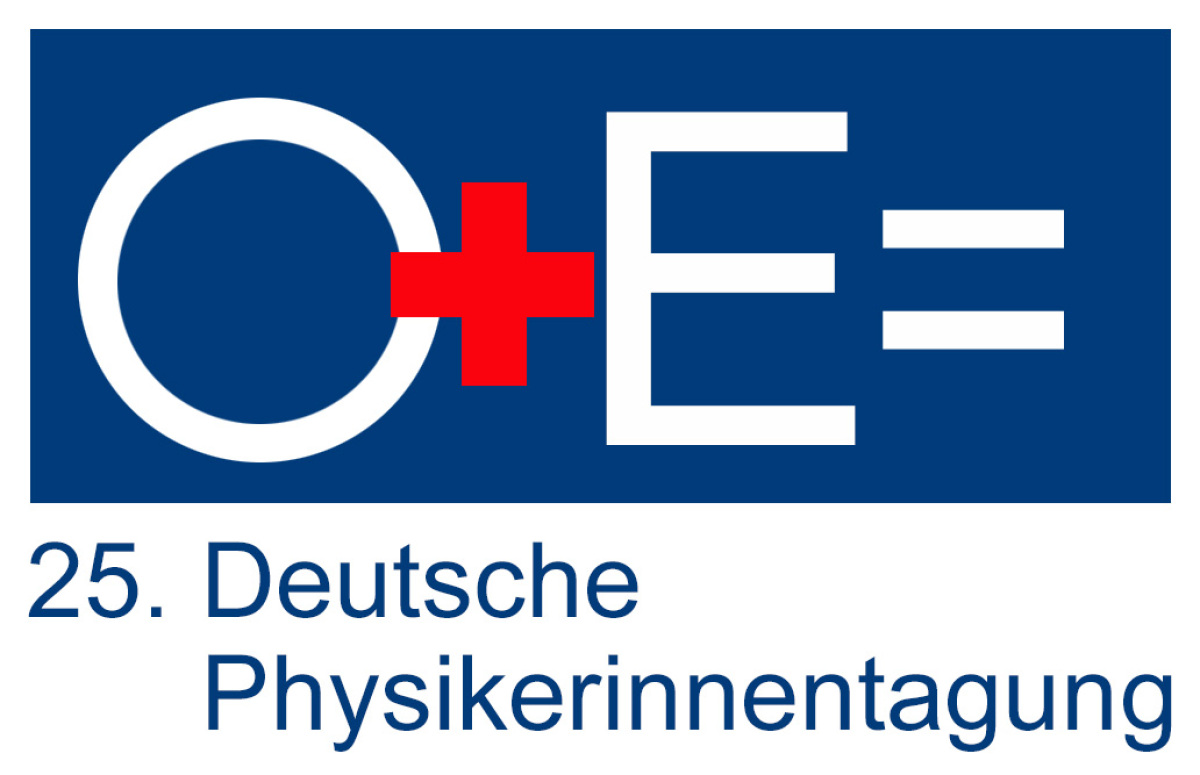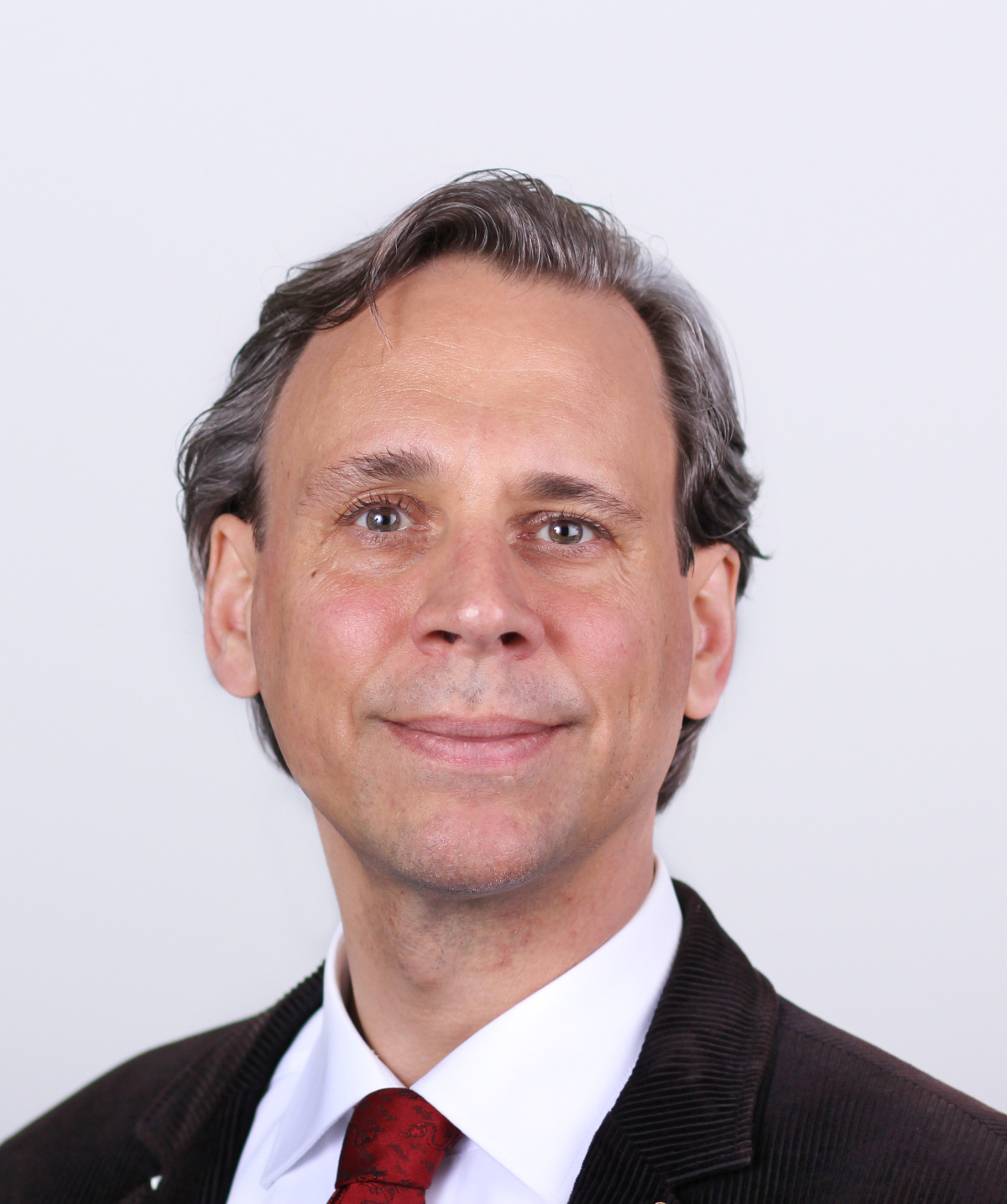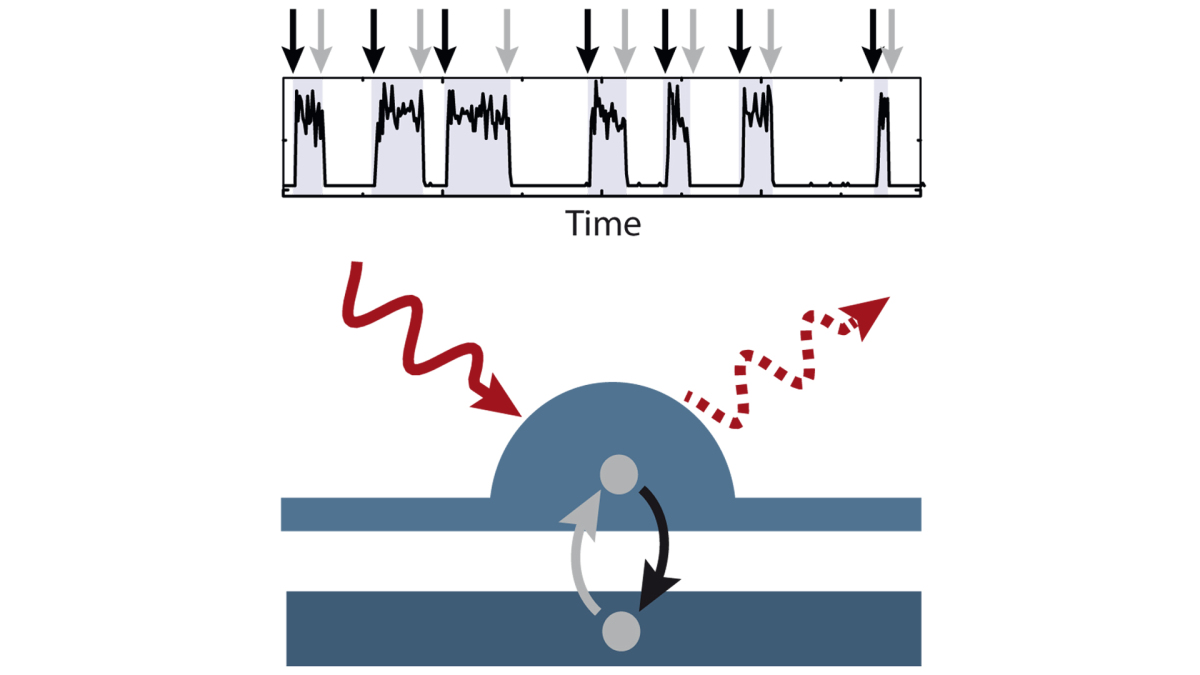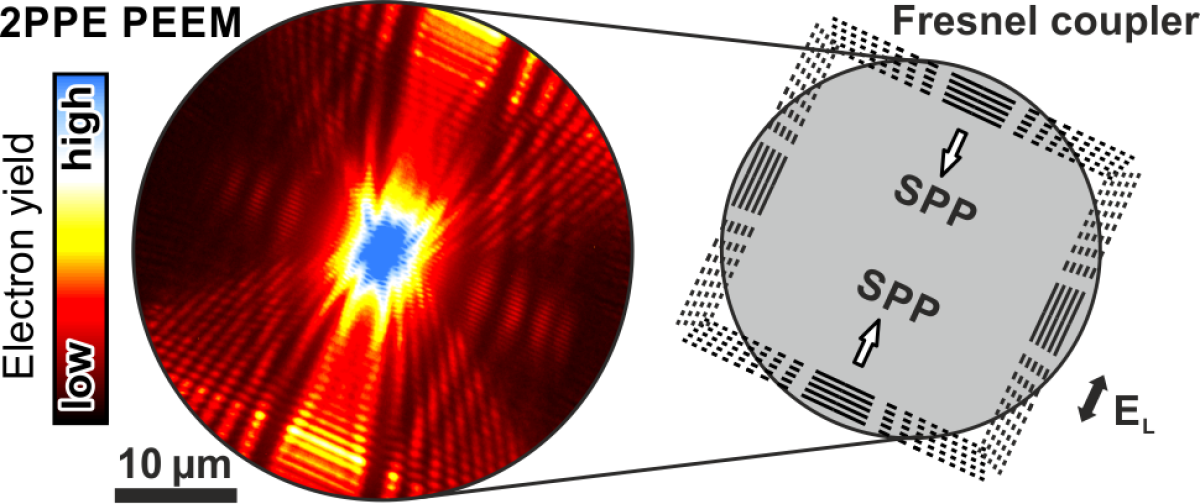News from the CRC 1242
New publication in Physical Review LettersPushing the limits in real-time measurements of quantum dynamics
[23.02.2022] Correct counting determines our modern life - whether it is the bits in the computer with their two states, the number of positive corona tests, or in general any system which has countable events. But the faster the counting is done and the smaller the signals are, the more likely data can be lost in the noise. The theoretical physicist Eric Kleinherbers from CRC1242 and CENIDE has now developed a new tool that sheds more light on such data.
Counting statistics is especially important in the quantum world. Modern measuring instruments are so sensitive that they can detect single quantum jumps. Limiting factors are the time resolution of the detector, the background noise, and the observation time. The resulting detection errors distort the measured information, so that no or wrong conclusions may be drawn about the underlying quantum dynamics. For their work, the researchers used so-called self-assembled quantum dots, which have similar properties to individual atoms, and employed a trick. The quantum dot is excited with a laser and radiates back light particles (photons) as long as it is "empty." If an additional electron enters the quantum dot, the light current breaks off. In this way, the electron occupation can be recorded in real time by the photons and subsequently statistically evaluated.
To test how robust the new evaluation algorithm is, data was deliberately deleted from the original data set, simulating an erroneous measurement. "These were typical experimental errors: signals that are too fast for the detector and are, therefore "missed" or a spike in the noise that fakes a signal" explains Eric Kleinherbers, lead author of the study. By comparing the original readings with the erroneous data, the researchers were able to demonstrate that the new method of analysis is much more error-tolerant than the standard methods of statistical analysis used previously. This makes the actual behavior of electrons and photons more visible, shedding light on the quantum world. "So far, it's a bit like trying to put a screw in the wall with an improper screwdriver," Kleinherbers explains. "It works, but it's not pretty. Now we have the right tool for analyzing the data."
Counting statistics is everywhere: in the evaluation of nerve signals as well as in radioactive decay, in microelectronics, and in magnetism. While experimental physicists are constantly coming up with new measurement techniques and experiments, theorists are also pushing the limits of feasibility with new evaluation methods. The developed method is not only interesting for new measurement results - existing data can now also be examined more closely, as Kleinherbers says. "We are in close exchange with colleagues who now want to see what else might be hidden in their data."
The results were published in the journal Physical Review Letters (DOI: 10.1103/PhysRevLett.128.087701).
New publication incl. cover feature in Chemistry - A European JournalNew publication about spin-crossover molecules in Chemistry - A European Journal
[22.01.2022] Bi-stable spin-crossover molecules with an abrupt and wide hysteric spin-state switching in the room temperature regime are promising candidates for future molecule-based switching and memory applications. Especially for the analysis of the ultrafast non-equilibrium dynamics in spin-crossover molecules, e.g., with pump-probe experiments which we want to perform within Project A05 in the CRC1242, those criteria are of crucial importance. A joint paper (DOI: 10.1002/chem.202103853), written under the leadership of Dr. Senthil Kumar Kuppusamy (AG Ruben, KIT) within the framework of the Projects A05 and C05, reports two Fe(II) spin-crossover complexes that show these technically relevant criteria and was recently chosen to be a cover feature of Chemistry - A European Journal.
25th German Female Physicists' Conference
[01.09.2021] From November 8 to 10, 2021 the collaborative research centers SFB 1242 "Non-equilibrium Dynamics of Condensed Matter in the Time Domain" (University of Duisburg-Essen) and SFB/TRR 270 "Hysteresis design of magnetic materials for efficient energy conversion" (Technical University of Darmstadt and University of Duisburg-Essen) established by the German Research Foundation will host the 25th German Female Physicists' Conference. The target group of the digital event is female physicists from various disciplines and career stages - from students to professors, from interns to industrial physicists in top management - and all interested persons.
Further information can be found here
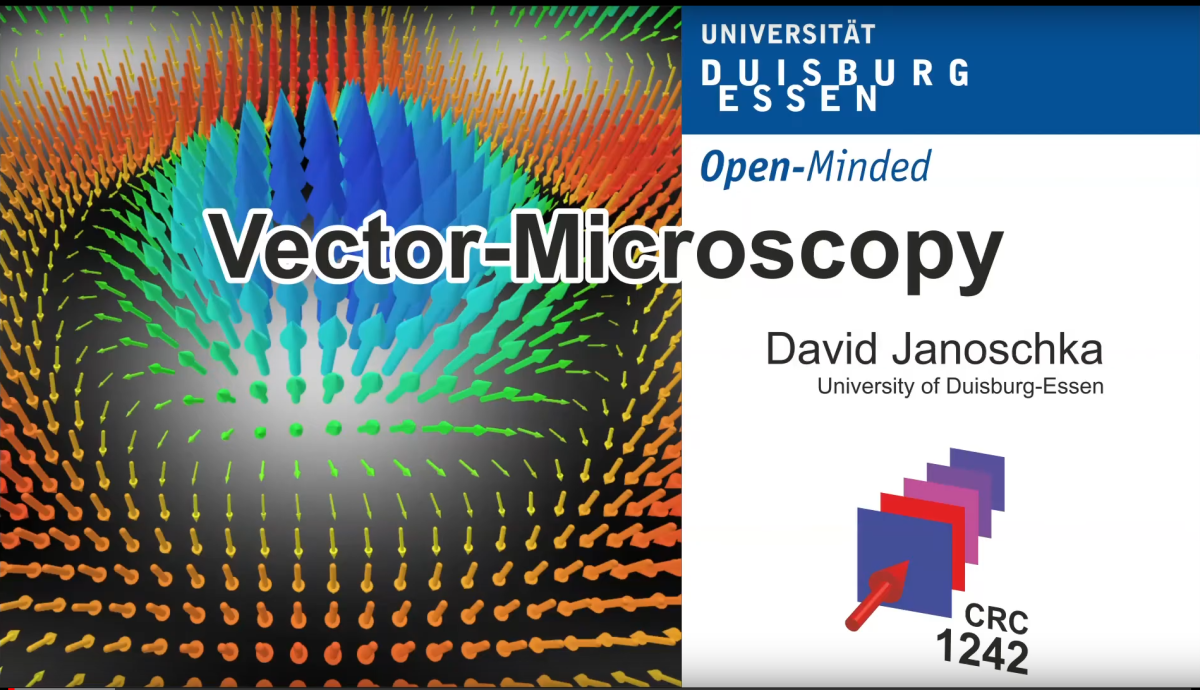
David Janoschka presents video-poster at LEEM/PEEM 11.5
During the pandemic, many conferences have moved towards an on-line format. This is also true for the biannular LEEM/PEEM conference, which focuses on low energy microscopy and photoemission microscopy. Ph.D. candidate David Janoschka had the opportunity to present his research on vector microscopy during the on-line conference as a video-poster. Follow the link to see his poster and enjoy a journey into our femtosecond microscopy lab.
The complete video can be found here
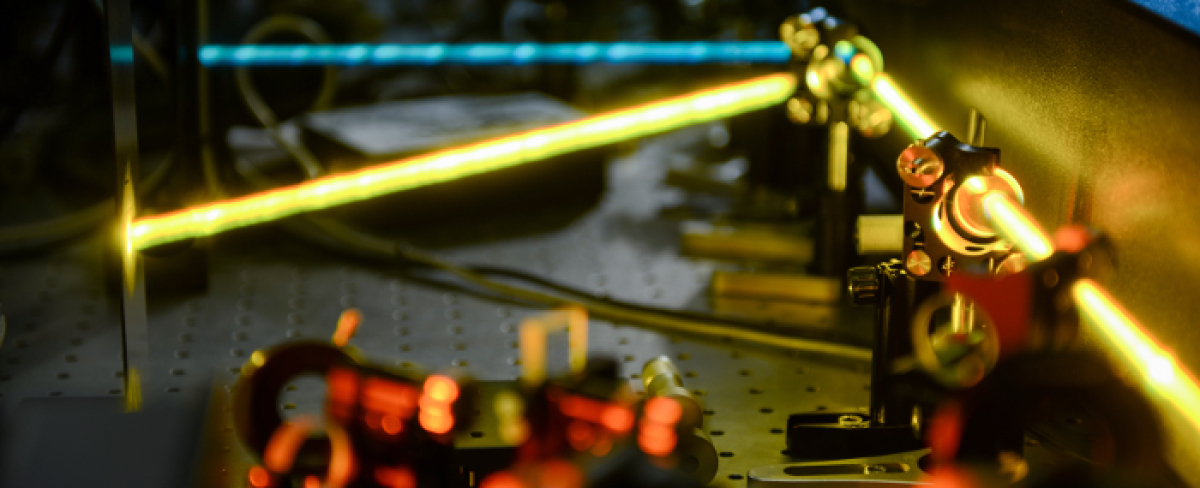
CRC 1242 enters its second funding period
[01.07.2020] After a funding recommendation of the on-site review panel and a positive decision of the DFG Grant Committee the CRC 1242 is now continuing its effort. We are grateful for the support and the opportunities which lie ahead of us.
The complete press release can be found here
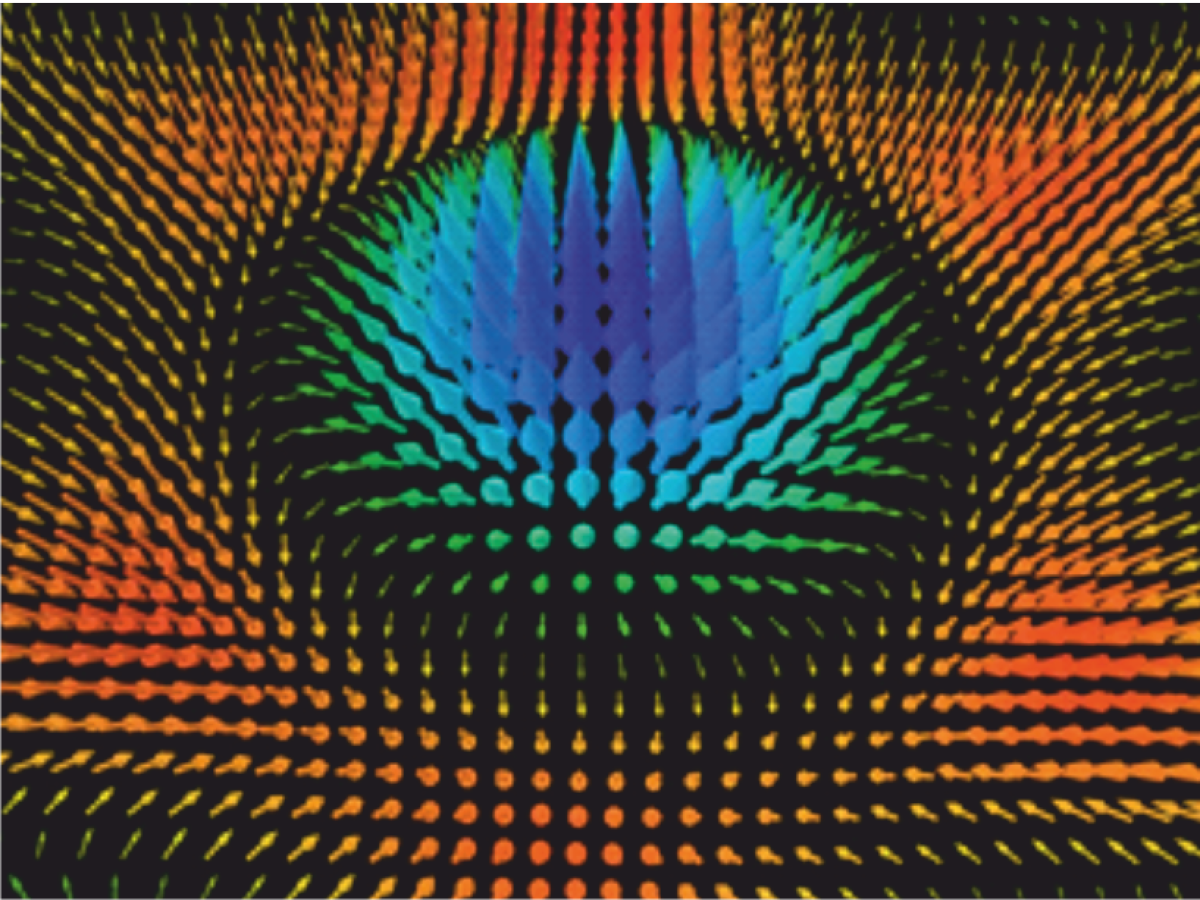
New Publication in ScienceNew Publication About Vector Microscopy in SCIENCE Magazine
[24.04.2020] The duration of their snapshot relates to one second as one second relates to the age of the universe: In a joint collaboration with Australian Scientist Tim Davis and the Group around Harald Gießen from Stuttgart, Physicists from the Center for Nanointegration (CENIDE) at the University of Duisburg-Essen (UDE) have developed ultrafast vector microscopy as a way of determining electric fields on surfaces with high temporal and spatial resolution. The new method was used to measure the dynamics of optical skyrmions in the time domain for the first time. The renowned journal "Science" publishes this breakthrough in nanooptics in its current issue.
Original publication:
“Ultrafast vector imaging of plasmonic skyrmion dynamics with deep subwavelength resolution”, Davis et al.
(DOI: 10.1126/science.aba6415)
Founder Competition of the sbmAward for Sebastian Schlücker
[01.10.2019] Prof. Sebastian Schlücker from the Faculty of Chemistry is keen to promote MINT subjects as early as primary school. Together with colleagues, he therefore distributes specially developed experiments with appropriate teaching/learning material. His idea won him 3rd place in the UDE's small business management (sbm) start-up competition. Congratulations!
Dynamics in quantum dotsSmallest measurable processes recorded individually
[27.09.2019] Colloquially, the term “quantum jump” is used to describe a tremendous development. In fact, it is the smallest change of state that can still be traced. Physicists from the Collaborative Research Center 1242 at the UDE have now succeeded in measuring every single jump by optical means and drawing conclusions about the dynamics of the electrons inside a quantum dot. The journal Physical Review Letters reports on this in its 122nd issue.
The experimental setup included a quantum dot – i.e. a solid structure of only about 10,000 atoms – next to a reservoir with electrons. About 100 times per second an electron jumps back and forth between this structure and the reservoir. It can jump into a high or low energy state into the quantum dot and change inside from top to bottom. For the first time, the researchers were able to observe this change through these tiny jumps.
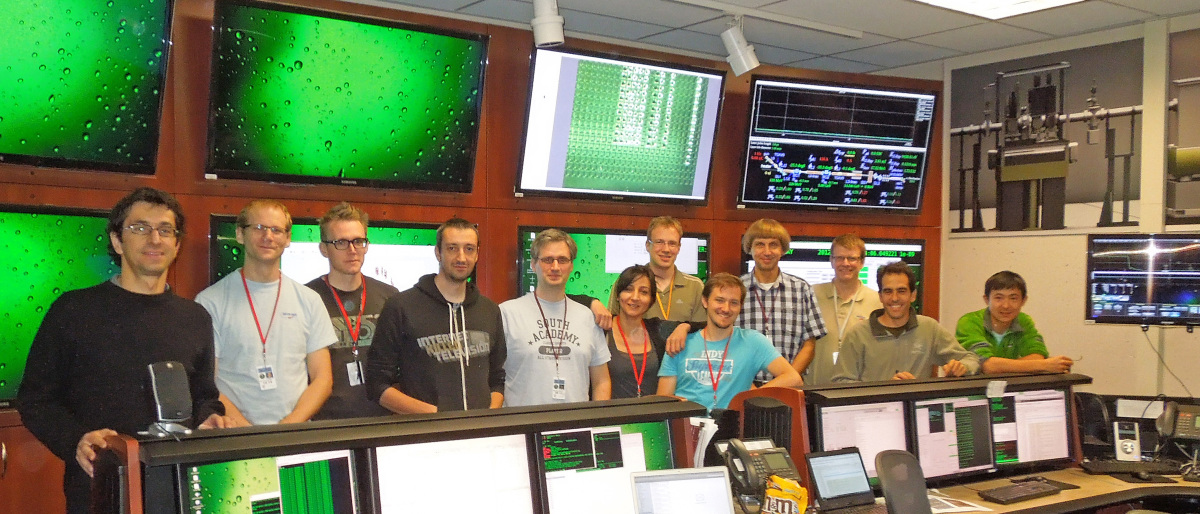
New Publication in ScienceLiquid-liquid phase transition in super-cooled phase-change materials
[14.06.2019] Phase-change materials (PCMs) are used in the latest generation of smartphones enabling higher storage densities and energy efficiency. When an electrical or optical pulse is applied to heat these materials locally, they change from a glassy to a crystalline state, and vice versa. These two different states represent the ‘0’ and ‘1’ of the binary code needed to store information. An international team of researchers led by Klaus Sokolowski-Tinten has now succeeded in observing the processes that occur during switching – something that has never been done before because of the short time-scales involved. They used the ultrashort and extremely brilliant X-ray pulses from an X-ray Free Electron laser to resolve the atomic structure changes of two Sb-based PCMs during the entire switching cycle. They found that two liquid states of the materials are involved in the process – one that has more rigid chemical bonds, and which helps stabilize the glassy “off” state at ambient conditions, and one that is rather metallic and can therefore crystallize very quickly to produce the “on” state. These results provide a microscopic understanding on how PCMs work and why some materials are PCMs and others not. More generally, this work and the applied time-domain approach can also help to understand how liquids of other classes of materials behave when they are rapidly super-cooled to temperatures well below the melting point and why some liquids are more likely to form a glass than others. The study, published on June 14th in Science, was coordinated by the University of Duisburg – Essen and European XFEL and carried out at the Linac Coherent Light Source of SLAC National Accelerator Laboratory (Menlo Park, USA). It was was part of an international collaboration including scientists from Forschungszentrum Jülich, Institut Laue-Langevin, Lawrence Livermore National Laboratory, Lund University, Paul Scherrer Institute, SLAC National Accelerator Laboratory, Stanford University, The Spanish National Research Council (CSIC), University of Aachen, and the University of Potsdam.
Original publication:
“Femtosecond X-ray diffraction reveals a liquid-liquid phase transition in phase-change materials”, Zalden et al.
DOI: 10.1126/science.aaw1773
Diversity Award of the University of Duisburg-EssenDr. Nora Dörmann receives the Diversity Award from the University of Duisburg-Essen
[13.06.2019] Dr. Nora Dörmann has received the Diversity Award of the University of Duisburg-Essen in the category "Managers". The prize was presented on 6 June as part of the Diversity Day by Prorector Prof. Dr. Barabara Buchenau and the speaker of the SFB 1242 Prof. Dr. Uwe Bovensiepen, who also gave the laudatory speech. Mrs. Dörmann is the managing director of the SFB 1242. The prize was awarded in recognition of her commitment to the promotion of women scientists.
New Publication in ACS PhotonicsFocusing Surface Plasmons with Fresnel-Zones
[26.02.2019] In the 19th century, Augustin Jean Fresnel invented his zone-plate; basically a hologram, which - by diffraction - forms a defined focal point if illuminated with a plane light wave. Frank Meyer zu Heringdorf's TR-PEEM Team has now applied the concept of Fresnel-focusing to surface-plasmon-polaritons, i.e., to electron-density waves that can propagate at metal surfaces with almost the speed of light in vacuum. Instead of focusing traveling plasmon waves by a Fresnel type zone plate, however, the team structured particular Fresnel-type grating couplers that were illuminated by femtosecond laser pulses, and that very effectively excited plasmon waves forming a focus at a desired location. Using their time-resolved photoemission microscope, the team could characterize this "Fresnel-optics for surface plasmon waves" in detail, and they could follow the formation of the focus in a super-slow motion movie on the femtosecond time-scale. The results were now published in ACS Photonics.
Archive
2018
| Award of the Sparkasse Duisburg Outstanding Dissertation | [20.11.2018] Congratulations! Physicist Dr. Philipp Stegmann has been awarded by the Sparkasse Duisburg for his outstanding dissertation on "Generalized factorial cumulants applied to Coulomb-blockade systems", which has been carried out in the working group of Prof. Dr. Jürgen König. In his dissertation, Stegmann developed new theoretical methods for the statistical analysis of charge carrier dynamics in quantum dots and thereby successfully contributed to research activity pursued within the CRC 1242. |
|
Highly Dynamic Solid State Research Prof. Dr. Dmitry Turchinovich joined the CRC 1242 |
[30.07.2018] They are highly dynamic: The microscopic interaction processes inside solids take place on ultrafast timescales. What exactly happens to the electrons and ions in selected cases and how they affect the electrical, optical and mechanical material properties is investigated by Prof. Dr. Dmitry Turchinovich (40) using ultrashort pulses in THz spectral regime: Prof.Turchinovich who has been appointed as professor in Experimental Physics at the University of Duisburg-Essen in 2017 recently joined the CRC 1242 with a new research project. |
2017
St. Peter-Ording
|
[14.08.2017] „Non-equilibrium dynamics“ on the German North Sea coast: About 45 graduate students and postdocs exchanged with national and international researchers and project instructors from the CRC 1242 on current scientific topics from August 7 to 11, 2017 in St. Peter-Ording. In addition to exciting poster sessions, a special highlight was the lecture "Inside Nature-branded journals" by Dr. Luke Fleet, Senior Editor at Nature Physics. |
Dies academicus 2017
|
[29.06.2017] Celebrate the best: At the „Dies academicus“, outstanding scientific performances and the most innovative ideas have been awarded at the University of Duisburg-Essen (UDE). At this year's ceremony on June 28, 2017, the experimental physicist Dr. Tim Frigge from the working group of Prof. Michael Horn-von Hoegen received a prize for his dissertation on "Ultrafast structural non-equilibrium dynamics of the optically excited Si(111)(8x2)->(4x1)-In phase transition". In this, Frigge investigated initial structural dynamics of the photoinduced melting of a charge density wave in atomic chains of Indium on a Silicon(111) surface. |
Doctoral Retreat
|
[10.05.2017] Open discussions between peers to sharing ideas: About 25 scientists are going to meet at the Doctoral Retreat of the CRC 1242 from May 15 to 17, 2017 at „Akademie Klausenhof“ in Hamminkeln. In an open atmosphere lectures, talk sessions, a poster circle and joint activities provide the opportunity to inform themselves about current research and to strengthen the collaboration. |
Report in Nature: Observing Live Phase Transition
|
[30.03.2017] By comparison, a blink lasts a lifetime – atoms can rearrange themselves within one 350 quadrillionths of a second. As reported in the latest issue of the prestigious journal Nature, scientists of the Center for Nanointegration (CENIDE) and the CRC 1242 at the University of Duisburg-Essen (UDE), together with their colleagues from the University of Paderborn, have been able to observe the movement of an one-dimensional material in real-time. Their research confirms that the acceleration of the atoms could leave even a Porsche standing. The complete press release can be found here. |
Science Publication
|
[17.03.2017] Transmitting huge volumes of data and even moving matter using light: These are two of the visions that physicists working in the field of plasmonics have for the future. In a collaboration with colleagues from Haifa (Israel), Kaiserslautern and Stuttgart, scientists at the Center for Nanointegration (CENIDE) at the University of Duisburg-Essen succeeded in producing nanometer-sized plasmon swirls on a metal surface, filming the cycles at 100 attosecond intervals. The video can be found here. The complete press release can be found here. |
UDE: 2D Material withstands extremely high current densities
|
[06.02.2017] The particle penetrated the ultra-thin sample with speeds of up to 450 km/s, yet everything The complete press release can be found here. |
International Symposium
|
[16.01.2017] International symposium on ultrafast soft x-ray spectroscopy and scattering on Friday, 27 January: The Collaborative Research Center 1242 of the Faculty of Physics and the Center for Nanointegration Duisburg-Essen (CENIDE) invite you to attend at the NanoEnergyTechnologyCenter (NETZ) on campus Duisburg. International experts exchange ideas such as how to apply the processes and methods for element-specific analysis in complex nanostructures.
Please find directions and a detailed program here. |
2016
Research into Superconductors
|
[20.12.2016] Below their critical temperature they conduct the electrical current without resistance and thus extremely efficiently: Until now it has only been known that high-temperature superconductors work – but not how. Physicists at the University of Duisburg-Essen (UDE) have succeeded in tracking the redistribution of the energy in the material. To do this they used a medium which is itself fast enough to register these processes – light. The "Nature Communications" journal has just published their results.
The complete press release can be found here. |
Kick-Off-Meeting
|
[25.11.2016] Getting to know each other better, professional exchange and networking: Around 80 scientists met at the kick-off-meeting of the CRC 1242 from 21 to 23 November 2016 in the conference center „Physikzentrum“ in Bad Honnef. Numerous lectures, poster presentations and joint activities such as hiking provided the opportunity to inform themselves about current research and to strengthen the cooperation. External speakers from renowned institutions were also invited.
The complete program can be found here. |
UDE Guided Laboratory Tours on 4.11. and 2.12.:
|
[18.10.2016] Exclusive insights into the laser laboratory of the new CRC 1242 are being offered by the University of Duisburg-Essen (UDE) Faculty of Physics on November 4, 2016 and December, 2, 2016 (17:00, meet at the entrance to the MG building on Duisburg campus). Entrance is free, but registration in advance is necessary as the number of participants is limited. The complete press release can be found here. |
Open Day „WissensNacht Ruhr 2016“
|
[04.10.2016] Exciting labs, amazing lectures and exhibits: during the Wissensnacht Ruhr at the Faculty of Physics and the NanoEnergyTechnologyCenter (NETZ) on September 30, 2016, hundreds of visitors went on a discovery tour through the research activities at the Campus Duisburg. They also got an insight into the CRC 1242 about „Non-Equilibrium Dynamics of Condensed Matter in the Time Domain“.
Selected impressions can be found here. |
Award of the Sparkasse Duisburg
|
[28.09.2016] Congratulations! Physicist Amran Al-Ashouri from the working group of Prof. Dr. Axel Lorke receives one of this year's study awards of the Sparkasse Duisburg for his outstanding study performance. Al-Ashouri is financially supported as a Lab Student within the CRC1242. For years, the Sparkasse Duisburg has been promoting and supporting the scientific work and research of the University of Duisburg-Essen in a variety of ways. As in the previous years, prizes are awarded for dissertations that meet particularly stringent scientific requirements. At the same time, five outstanding study achievements are awarded. |
Major Success for the Faculty of Physics
|
[31.05.2016] The competition was of a very high standard: Numerous groups of researchers applied for a new Collaborative Research Centre (SFB). "In view of the large, nationwide competition, we are very happy that the Deutsche Forschungsgemeinschaft opted for our application", said a very pleased Prof. Dr. Uwe Bovensiepen, Head of the Ultrafast Dynamics at Interfaces group of researchers in the Faculty of Physics of the University of Duisburg-Essen (UDE). "At the same time, this decision confirms our leading role in an important field of physics", explained the future CRC 1242 spokesperson.
The complete press release can be found here. |

